
OR
Opinion
Harnessing Synergies in Agriculture through Systems Thinking
Published On: January 18, 2024 09:00 AM NPT By: Sushil Thapa and Nityananda Khanal
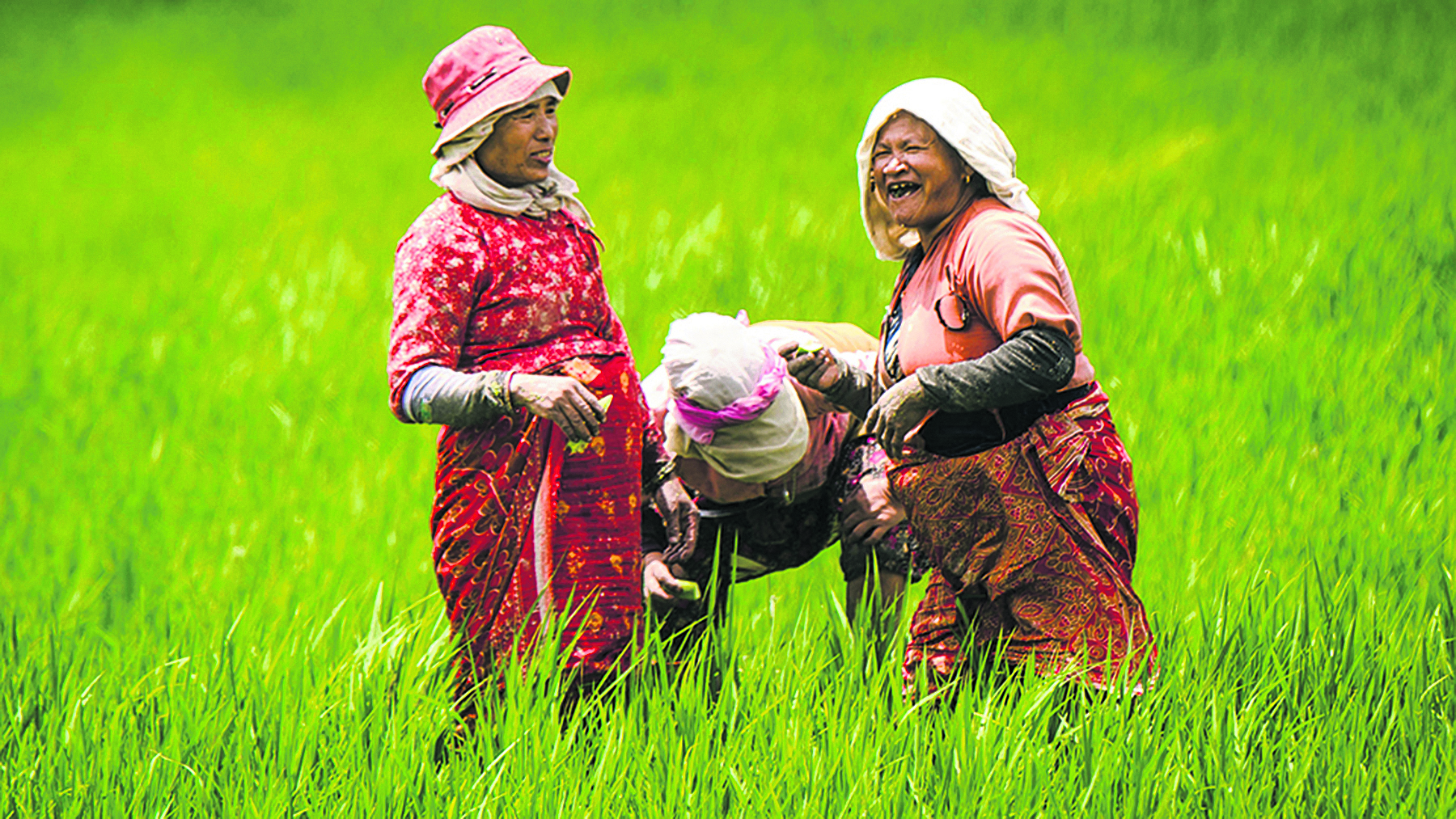

Sushil Thapa and Nityananda Khanal
Dr. Thapa is an Agronomy Professor at the University of Central Missouri, USA, and Dr. Khanal is a Research Scientist at Agri-Food, Canada.sthapa@ucmo.edu
More from Author
As Nepal strives for food security, economic development, and environmental conservation, systems thinking emerges as a crucial tool to navigate the complexities inherent in the agricultural sector and beyond. A holistic perspective is needed to address the problems associated with climate, biodiversity, livestock, crops, and human elements in intricate agro-ecological settings. By embracing a systems approach, Nepal can effectively navigate current complexities by fostering inclusive, resilient, and sustainable agricultural practices that contribute to the broader goals of agricultural development.
Agriculture is an interconnected, interdependent, dynamic, and interacting system of technical, social, economic, and ecological components. Intuitively, all issues or problems associated with agriculture are also interconnected, interdependent, and interacting elements, hence the systems of problems. Similarly, all actors or stakeholders associated with agriculture are also interconnected, interdependent, and interacting elements in the system, hence the systems of actors. Lack of understanding of such intricacies of agricultural systems led to the continuation of a reductionist approach to solving the perceived problems with a “quick fix” approach, resulting in unintended consequences such as disease-pest outbreak, loss of biodiversity, soil degradation, greenhouse gas emissions, and environmental pollution.
Agricultural education, research, and development must be based on the understanding of agriculture as a whole and how various components influence one another as part of a unified whole. Such a perspective is known as systems thinking. This necessitates collaborative learning among primary stakeholders, developmental thinkers, and facilitators to understand both the interconnected issues and the actors within the systems. Conducting a systemic joint analysis of these problems and actors helps pinpoint leverage points - areas of significant influence - which can then be strategically targeted through interventions to initiate positive, multi-faceted ripple effects. Systems Thinking is scalable from the micro-level (within a farm) to the meso-level (community), and macro-level (region or nation) or vice-versa.Such systemic interventions do not have a narrowly focused goal of optimizing outputs as typified by the reductionist approach, rather they foster the relationships among the elements resulting in resilient and sustainable systems.
Our traditional agricultural systems, initially structured for food, feed, and fiber production, have evolved to encompass new goals such as biodiversity conservation, emissions reduction, and climate change adaptation. Therefore, every decision-making requires a holistic, systems approach, integrating indigenous and modern scientific knowledge from various disciplines and considering social, ecological, and economic interactions. In this situation, the participatory systems approach capacitates the stakeholders to recognize the systemic barriers to be tackled and leverage points to be capitalized on for harnessing the transformative potential of the agricultural sector.
Understanding the interconnections
In Nepalese agriculture, a systems approach would involve considering the interconnections between different elements, recognizing feedback loops, and understanding how changes in one aspect, such as water management or crop choices, can impact the entire system. As discussed before, the agricultural system in Nepal is not merely a sum of its parts but rather a holistic entity where elements such as farm households, crops, livestock, environmental factors,and social structures (markets, policies) interact in intricate ways. Examining it through a systems lens allows us to comprehend the ripple effects of decisions and interventions across the entire agricultural landscape.
Applying systems thinking also involves considering stock and flow elements, and various factors attenuating to understand the dynamics of the agricultural system. For instance, in the context of soil fertility management, the stock represents the overall nutrient content in the soil, while the flows include the application of fertilizers, organic matter mineralization, and nutrient uptake by crops, while the soil microbiomes, peripheral biodiversity, and weather patterns attenuate the flows. Systems thinking encourages understanding and analyzing how these stocks and flows feed forward and backward and interact with other components of agroecosystems over time. Understanding these interconnections is paramount for policymakers and stakeholders to devise and execute effective strategies that address the multifaceted challenges and optimize ecosystem services.
Enhancing climate resilience
Climate change manifesting itself as temperature extremes, erratic precipitation, and prolonged drought poses several challenges to Nepalese farmers. Systems thinking offers a systemic lens to navigate these challenges by contextualizing climate-resilient strategies within a broader ecological and social framework. The approach facilitates the integration of climate change mitigating and adaptive practices known as climate-smart farming practices including selection of crop, irrigation management, cropping seasonality, landscape and vegetational architecture culminating in a comprehensive strategy to bolster agricultural resilience in the face of climate change.
In the southern plains (Terai region), where water scarcity can be a pressing issue, a systems approach might involve the implementation of an efficient irrigation system, and seasonal adjustment in cropping, coupled with the cultivation of drought-resistant crops and cultivars. In contrast, in the higher altitudes (Hills and Mountain regions), strategies may focus on context specific agro-forestry and diversification of crops and cropping systems to adapt to changing temperature and precipitation patterns. Systems Approach enables the formulation of farm-specific, community-specific, and region-specific strategies, ensuring the resilience of agriculture to the dynamic impacts of climate change and socio-economic needs.
Optimizing resource utilization
Given Nepal's abundant natural resources for agriculture, it is imperative to adopt a strategic approach that optimizes resource utilization within the carrying capacity of the resource base.Systems thinking provides a structured framework to discern the intricacies between components and aptly identify leverage points for strategically targeting interventions that can yield significant positive impacts on productivity, sustainability, and resource management. For instance, the integration of livestock with crop production merges as a strategic synergy, fostering nutrient cycling, minimizing external input dependency, and elevating overall farm productivity, cash flow, and profitability, while reducing greenhouse gas emissions and environmental pollution, compared to the specialized cropping and livestock husbandry.
The dynamic relationship between biodiversity, water resources, soil health, and crop choices can be addressed through a systems approach. For instance, efficient water management practices, such as rainwater harvesting and drip irrigation can be integrated, considering the specific needs of different crops in various regions. Similarly, the incorporation of cover crops, underutilized crops, or agroforestry into the cropping system can enhance soil fertility, reduce erosion, and contribute to food security and sustainable resource management.
Promoting inclusive decision-making
Achieving sustainable agricultural development relies on the principles of experiential learning and participatory decision-making. The diverse topography and agro-climatic zones across the country highlight the need for context-specific solutions. Embracing systems thinking, which emphasizes the interconnectedness of various elements within the agricultural landscape, calls for the active involvement of key stakeholders. In this bottom-up collaborative approach, farmers, local communities, government agencies, and non-government organizations collectively diagnose the problems, identify leverage points, and contribute to the formulation and execution of programs. This participatory approach uses causal loop diagrams and mental maps to identify the problems, visualize the interconnections among elements, realize the constraints and opportunities, and develop pathways toward long-term solutions.
Participatory decision-making ensures that solutions are not only tailored to the unique challenges and opportunities present in different regions of Nepal but are also socially just and environment friendly. This inclusive process fosters a sense of ownership among stakeholders, experiential learning, successful implementation, and long-term positive impacts leading to sustainable transformation of agricultural systems. For instance, in developing strategies to address agricultural pest management, a systems approach involves engaging local communities to explore the potential of biodiversity harboring natural enemies of pests, documenting their traditional pest management practices, and incorporating indigenous knowledge into modern solutions.
How to promote systems thinking?
Promoting systems thinking in Nepalese agriculture involves a multifaceted approach that includes the facilitation of co-learning and awareness raising among all players from farmers to policymakers-what, why, and how of the systems thinking and practices. The systems thinking perspective must be integrated into education, research, policy formulation, designing institutional support systems, and developmental interventions.
Systems thinking and systems mapping workshops and training programs should be conducted in collaboration with agricultural universities, research and service provider institutions, policymakers, media groups, and private agencies, and the systems mapping tools need to be implemented to develop and implement agricultural programs at all developmental scales from community to national level.
Integration of systems thinking principles, processes, and practices into existing agricultural research and extension systems is required to incorporate a systems perspective when providing advice on crop, water, soil, and livestock management.
Investment in systems research and establishing demonstration farms as living labs to provide evidence-based insights into the effectiveness of systems approaches allows farmers to witness the benefits firsthand.
Engaging local communities in the co-learning and decision-making process will encourage community-based initiatives that incorporate indigenous knowledge and practices into systems-oriented approaches and ensures that benefits are shared among the stakeholders.
Recognizing and rewarding farmers adopting sustainable and systems-based practices is a must.
Working with educational institutions to integrate systems thinking principles into agricultural curricula will ensure that the next generation of farmers and agricultural professionals will be well-versed in holistic systems thinking and practices.
Establishing a monitoring and evaluation framework is needed to assess the impact of systems thinking initiatives. Regular evaluation of the effectiveness of implemented strategies and necessary adjustments based on outcomes and feedback is also helpful.
Collaboration with government agencies and advocating for the integration of systems thinking into agricultural policies can also help promote thinking systems.
The way forward
While the potential benefits of systems thinking in Nepalese agriculture are vast, challenges persist. Limited awareness, institutional barriers, political instability, and traditional linear thinking are major hurdles. Addressing these challenges necessitates targeted capacity-building initiatives, empowering stakeholders, and policy re-orientation at all levels. Adopting a systems thinking approach goes beyond being a strategic necessity for the agricultural sector; it represents a transformative expedition toward cultivating a sustainable, adaptive, and fair agricultural landscape capable of navigating the intricate challenges of the 21st century. The advantages of such an approach transcend immediate gains in agricultural productivity, extending to the overarching objective of promoting sustainable development and enhancing resilience in the face of a dynamically changing world.
You May Like This

Transforming Nepal’s Agriculture Sector
The Seventh National Agricultural Census data released recently by the National Statistics Office (NSO) paints a grim picture of the... Read More...
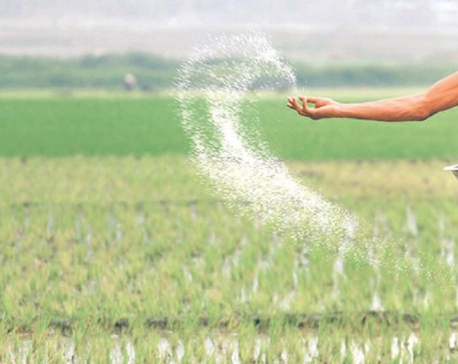
What’s the cause behind fertilizer shortage? What can be done?
Nepal needs to explore both short-term and long-term solutions to mitigate fertilizer shortage that has hindered the country’s agriculture productions... Read More...

Agriculture sector being ruined for the last 40 years, new system will ensure farmers' security: Minister Bhusal
KATHMANDU, June 27: Minister for Agriculture and Livestock Development, Ghanashayam Bhsual has said that the agriculture sector is being ruined... Read More...
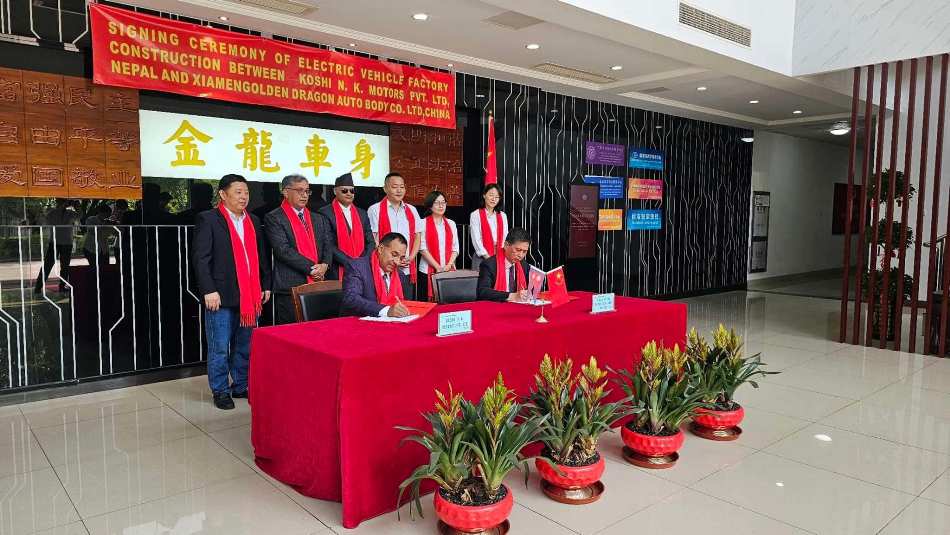



Just In
- Nepal and Vietnam could collaborate in promotion of agriculture and tourism business: DPM Shrestha
- Govt urges entrepreneurs to invest in IT sector to reap maximum benefits
- Chinese company Xiamen investing Rs 3 billion in assembling plant of electric vehicles in Nepal
- NEPSE inches up 0.07 points, while daily turnover inclines to Rs 2.95 billion
- Gandaki Province reports cases of forest fire at 467 locations
- Home ministry introduces online pass system to enter Singha Durbar
- MoLESS launches ‘Shramadhan Call Center’ to promptly address labor and employment issues
- Biratnagar High Court orders Krishna Das Giri to appear before court within one month in disciple rape case








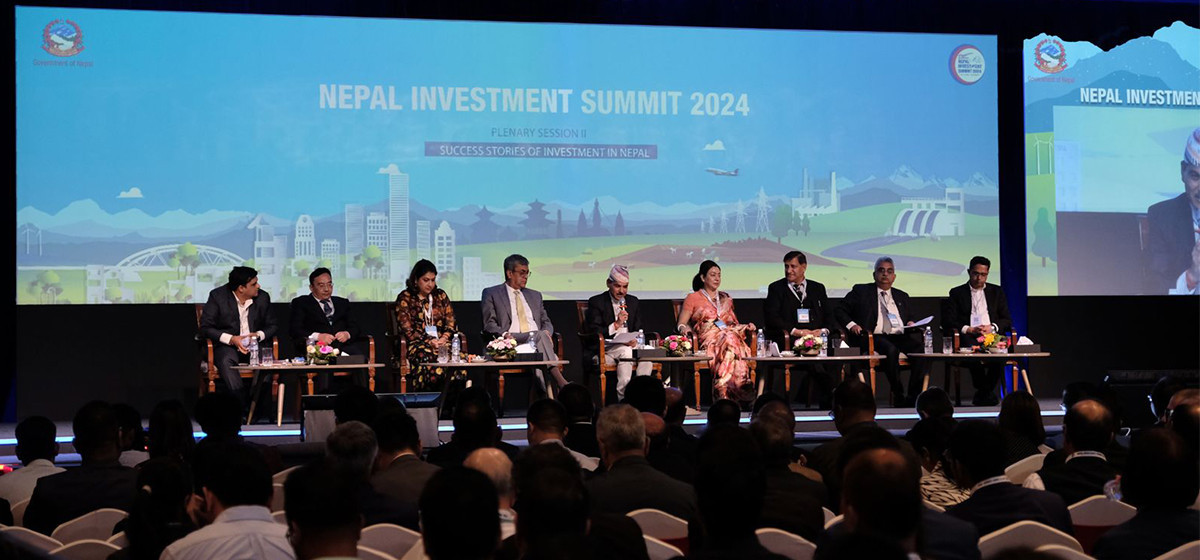


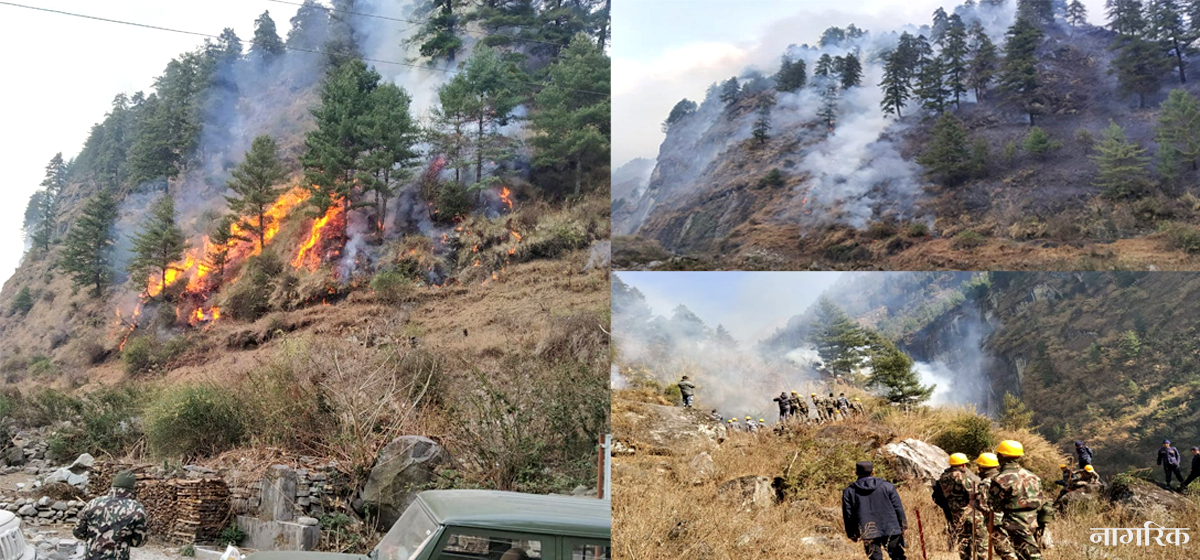


Leave A Comment